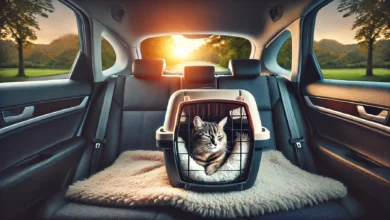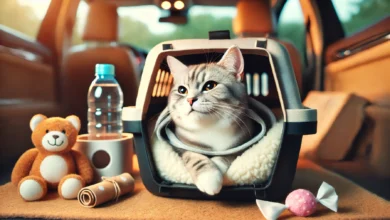Understanding the Cost of Travel with Cats
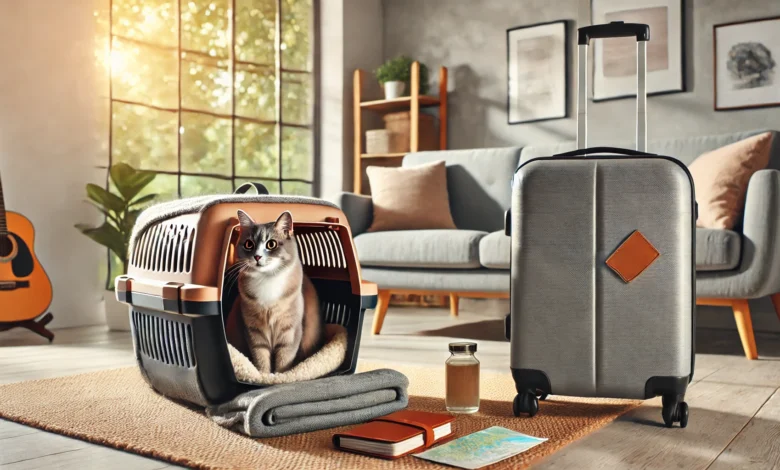
Traveling with a cat can be one of the most exciting adventures, yet so overwhelming.
Be it a road trip or flying, understanding the cost of travel with your feline companion is very important for smooth planning.
Just like preparing for your own journey, there are varied expenses to consider, including transportation costs, accommodations, and additional fees intended to take care of your pet.
Knowing the cost of travel means ensuring a comfortable and hassle-free adventure for both you and your feline friend.
Table of Contents
Traveling With Your Cat: What to Expect
There are a number of significant expenses one might not think about when it comes to preparing for a trip with a cat.
All such expenses will help keep your pet safe and comfortable during the journey.
By planning ahead, you can avoid unexpected costs and ensure that the trip is as smooth as possible for your furry companion.
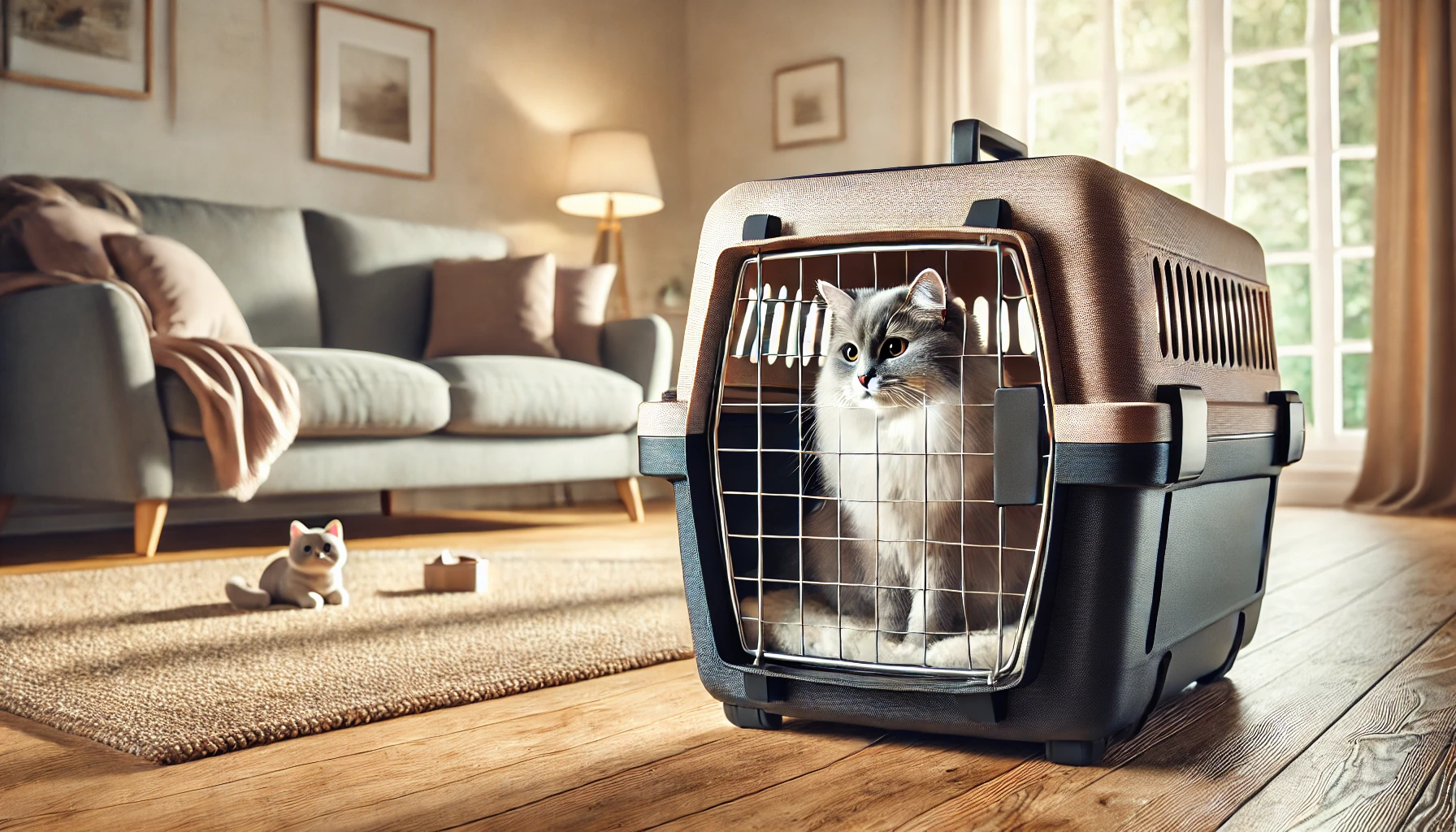
Cat Carriers and Safety
The most crucial item you will require is a strong and comfortable cat carrier.
A good carrier will keep your cat safe and secure during the journey.
Depending on the mode of travel—whether by car, plane, or train—you may need a carrier that complies with specific airlines or transportation requirements.
A good carrier can cost anywhere between $30 and $150, depending on the size, brand, and materials used.
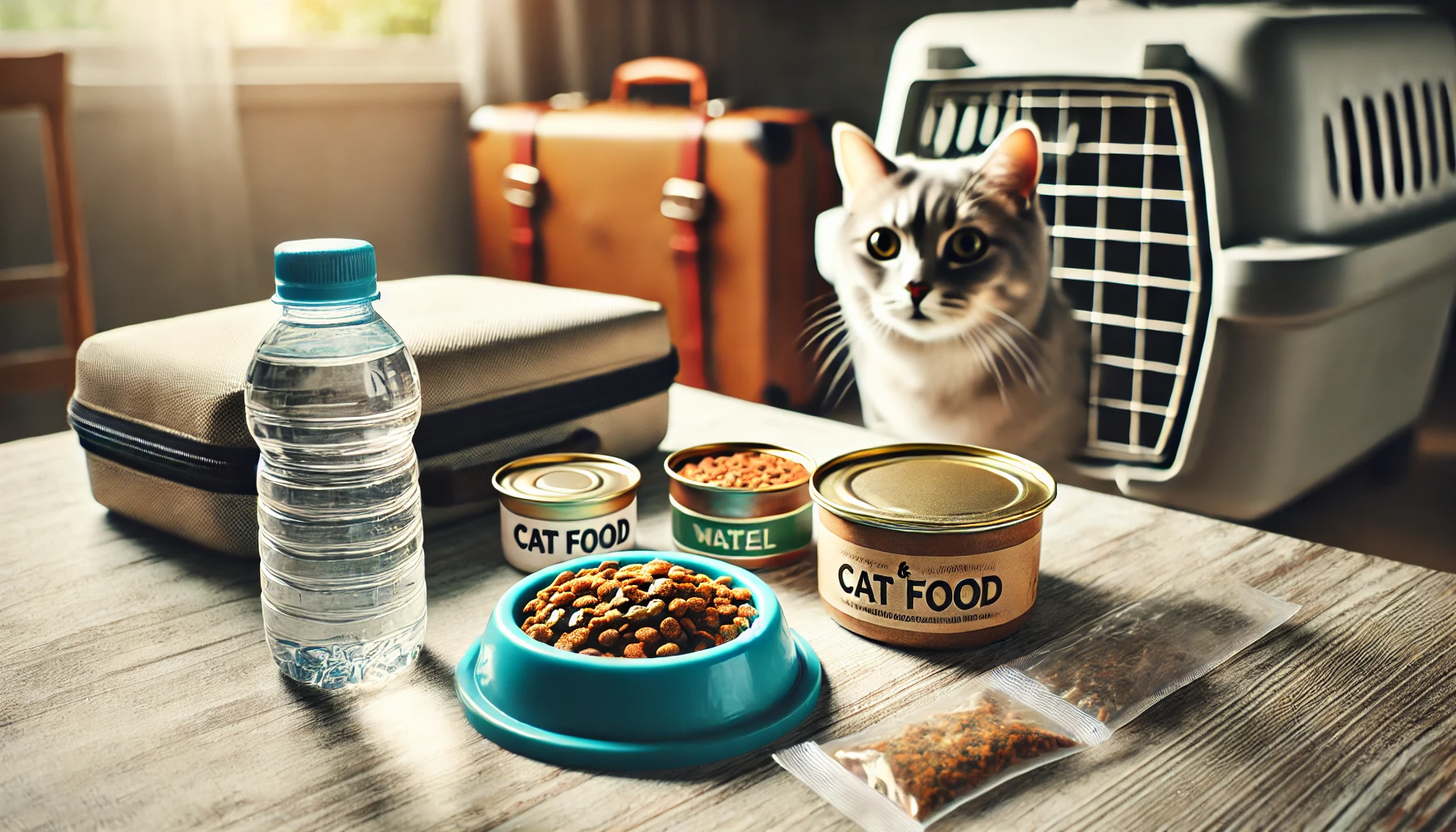
Food and Water Supplies
Bringing enough food and water for your cat is essential, particularly for longer trips.
You may want a travel-sized container for your cat’s food or even portable water bowls.
These accessories can cost anywhere between $10 to $30.
Be sure to pack an adequate supply of your cat’s favorite food and treats to comfort and calm them during the trip.
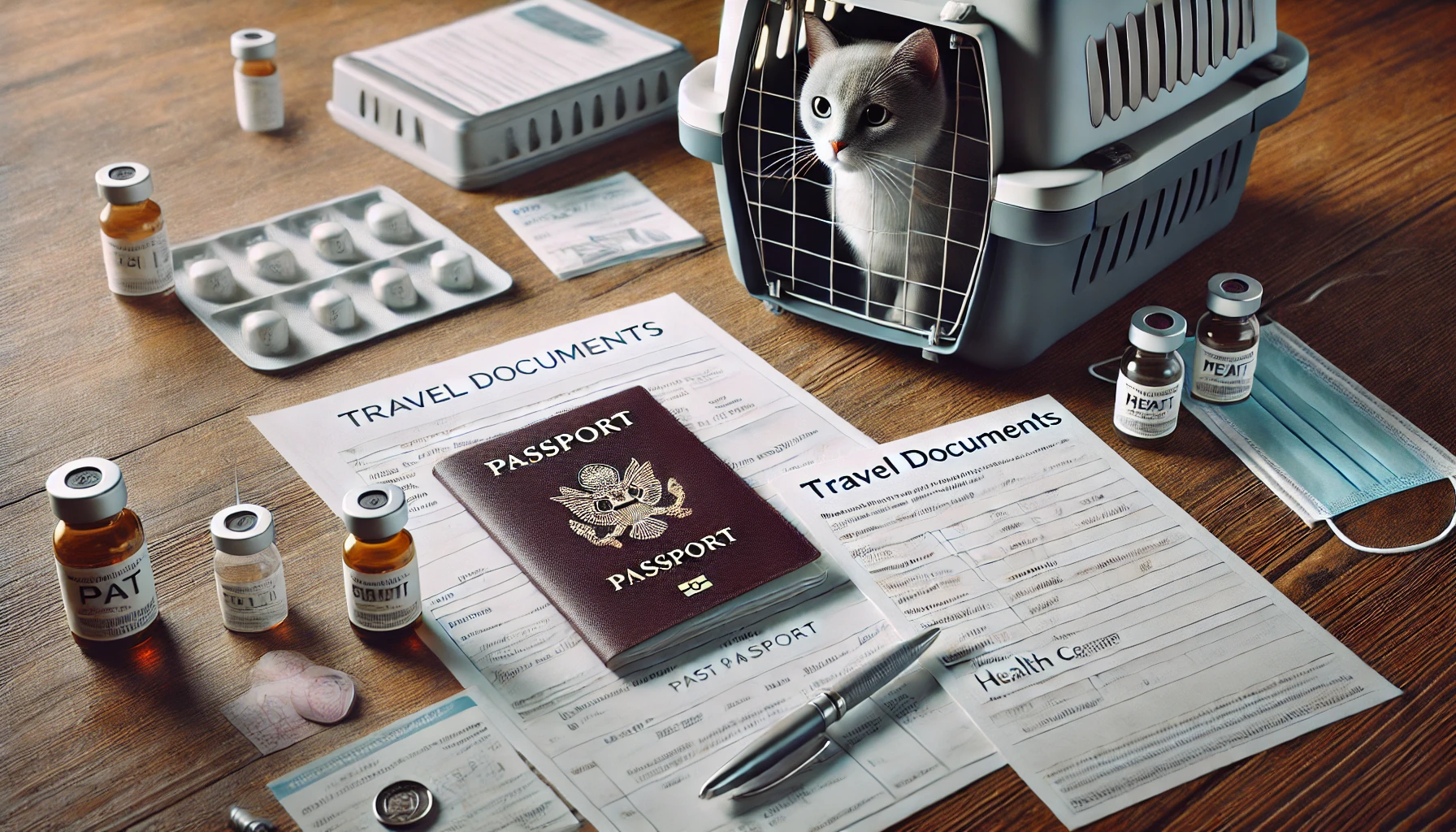
Travel Documentation Costs
If you are flying internationally or even out of state, there may be specific documentation you’ll have to prepare for your cat, such as health certificates or vaccination records.
Some airlines require these, and your vet may charge anywhere between $50 and $100 for this documentation.
It’s important to check well in advance with your destination about its regulations regarding traveling pets.
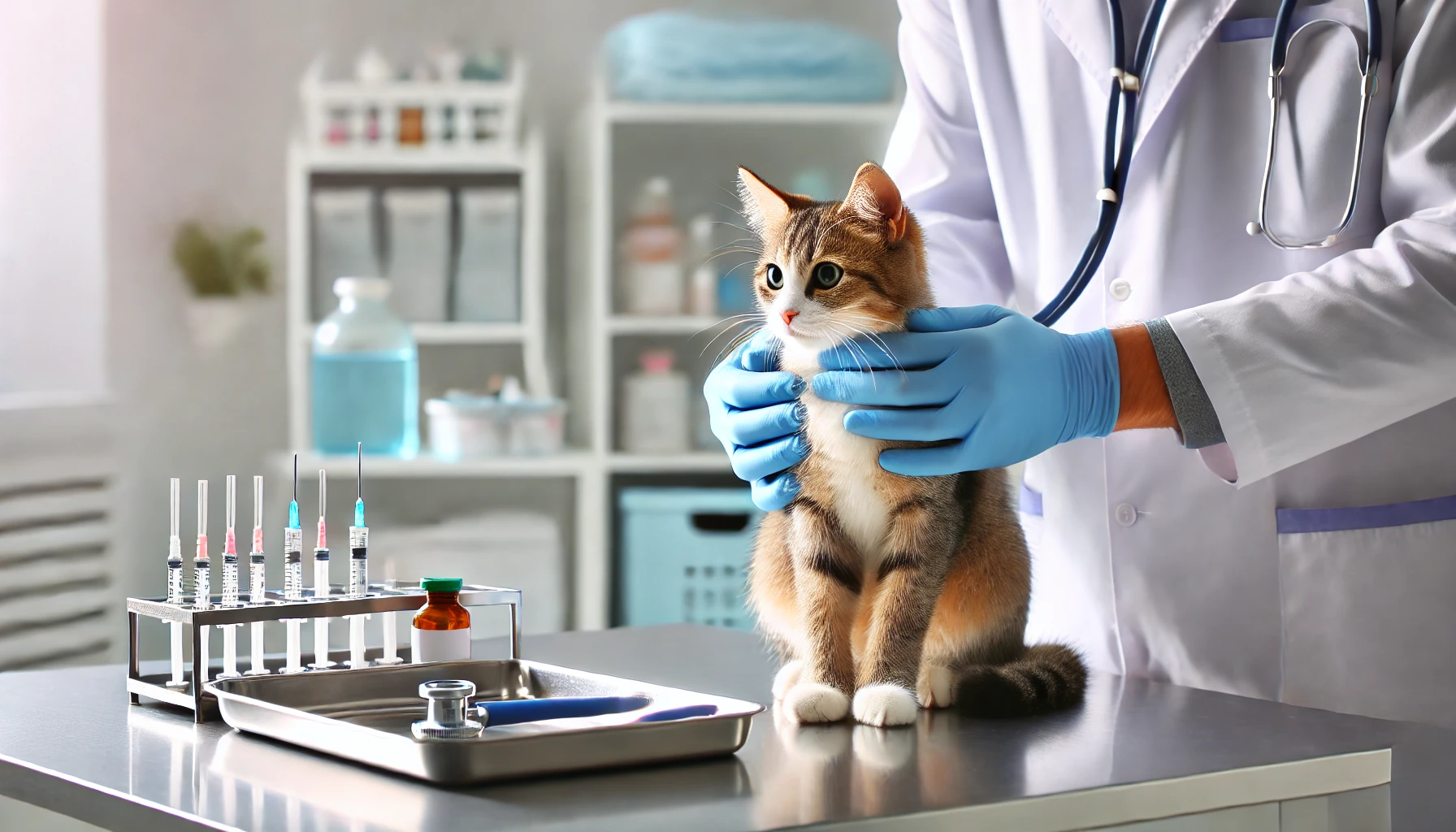
Health Check-ups and Vaccinations
We recommend bringing your cat in for a general check-up with your vet and ensuring their vaccinations are up to date before traveling.
In some countries or states, there are particular vaccinations your cat needs to have; without them, your cat may not be allowed to travel.
The cost of these check-ups and vaccinations ranges between $50 and $200, depending on where you are and which veterinarian you visit.
- Cat carrier: $30 – $150
- Food transport containers: $10 – $30
- Health documentation: $50 – $100
- Veterinary check-up: $50 – $200
Covering the aforementioned necessary costs will go a long way in ensuring that the rest of the cost of travel with your cat is as smooth as possible for both you and your feline companion.
Ensure you plan ahead for unexpected costs when traveling with your cat, keeping both safety and comfort in mind.
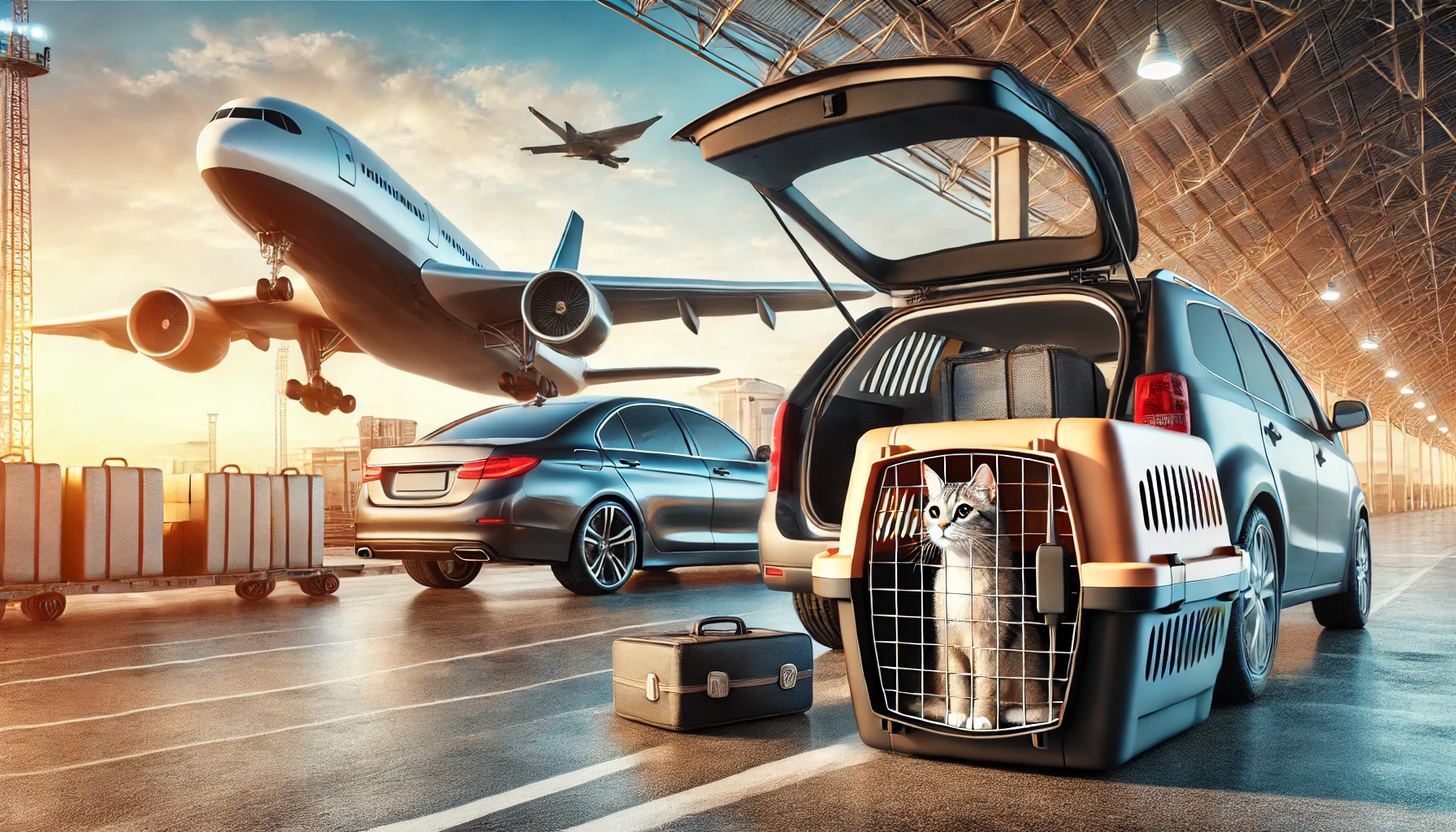
Transportation Costs: Car, Plane, or Train Travel
Transportation is often the single greatest expense when covering the cost of travel with your cat.
Whether you’re driving, flying, or taking a train, there are various costs and choices involved.
With some advance planning, you can ensure both your comfort and your cat’s, while also meeting any regulations or fees involved for your mode of transportation.
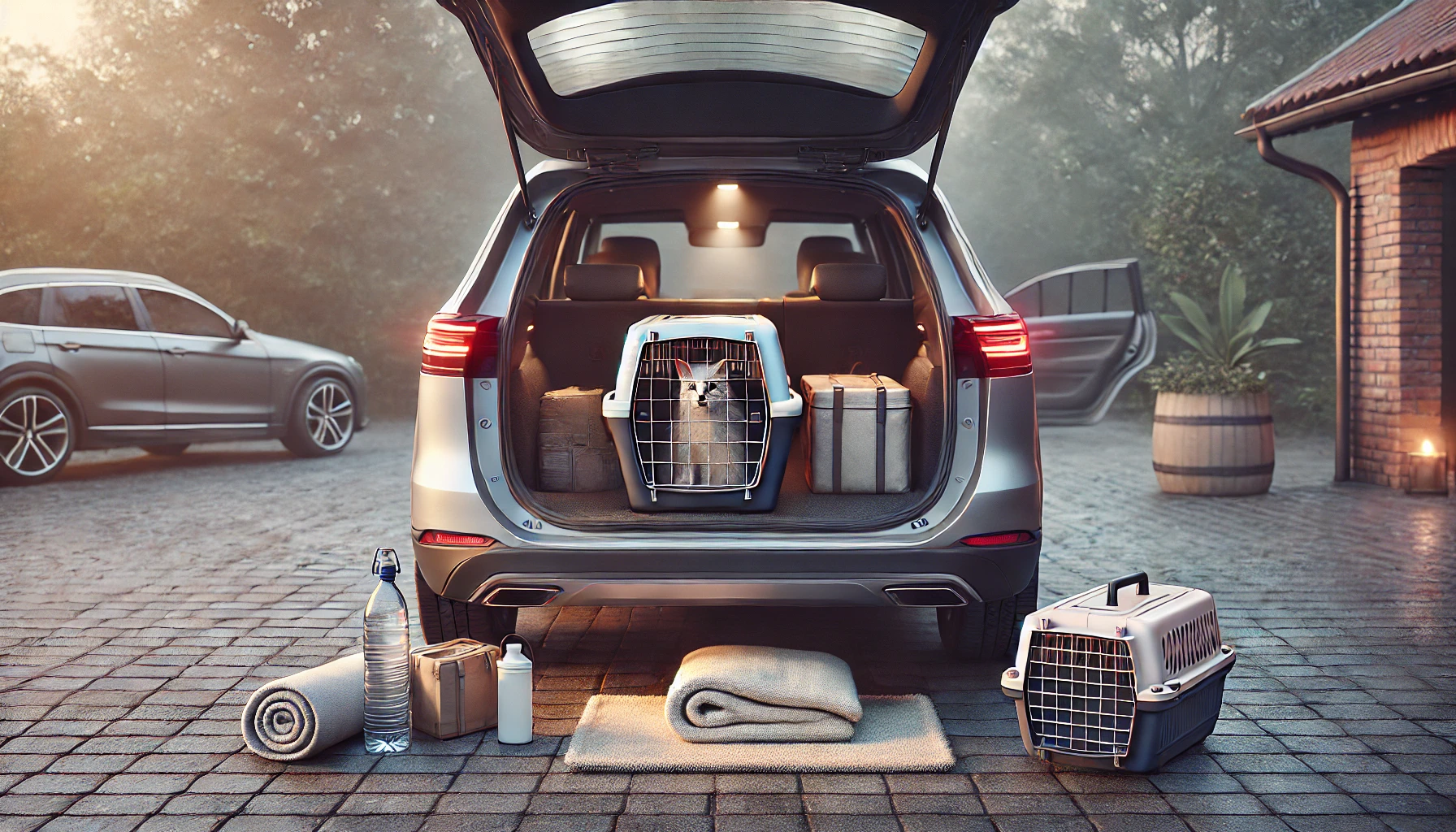
Car Travel Expenses
Traveling by car offers the greatest flexibility for those with pets, but be prepared for a few added expenses.
In addition to fuel and tolls, you may need to purchase other accessories to ensure your cat is comfortable and secure during the drive.
For example, a seatbelt harness that attaches to your cat’s carrier can be purchased for $15-$30.
Additionally, you will need to factor in rest stops along the way to feed or water your cat.
While car travel is more affordable compared to flying, these additional expenses should be kept in mind when calculating the overall cost of travel.
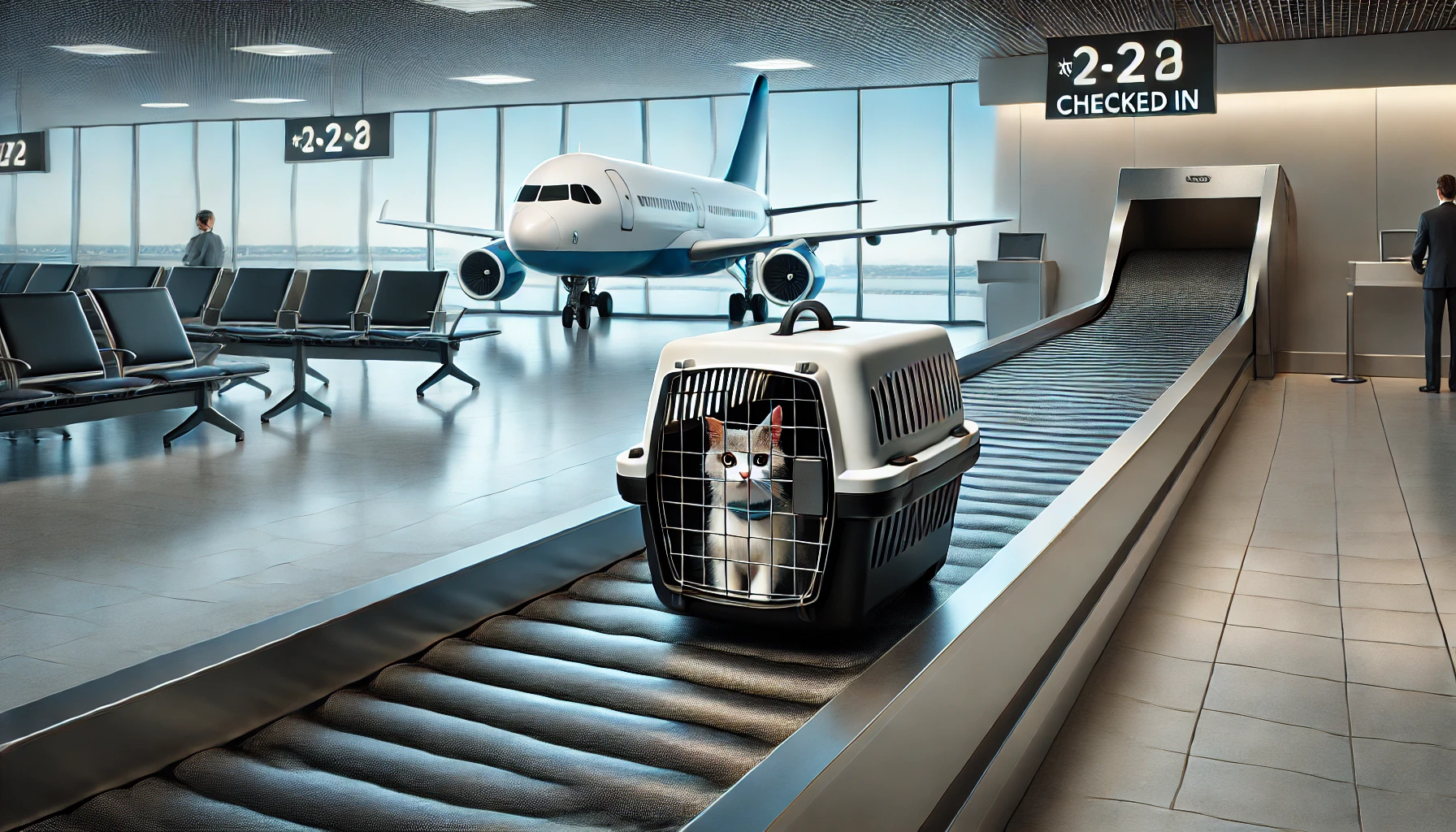
Airline Fees
Flying with your cat is one of the more costly travel options.
Most airlines charge a fee for bringing your pet on board, typically ranging from $75 to $200, depending on the airline and whether your cat will fly in-cabin or in cargo.
Be sure to check the specific rules of the airline you are flying with, as some only allow a certain number of pets per flight.
Airlines also have specific carrier requirements, so you will need to get your cat accustomed to the carrier for the entire duration of the flight.
Additionally, it’s important to budget for extra fees such as in-cabin pet fees, cargo fees, and the possibility of layovers.
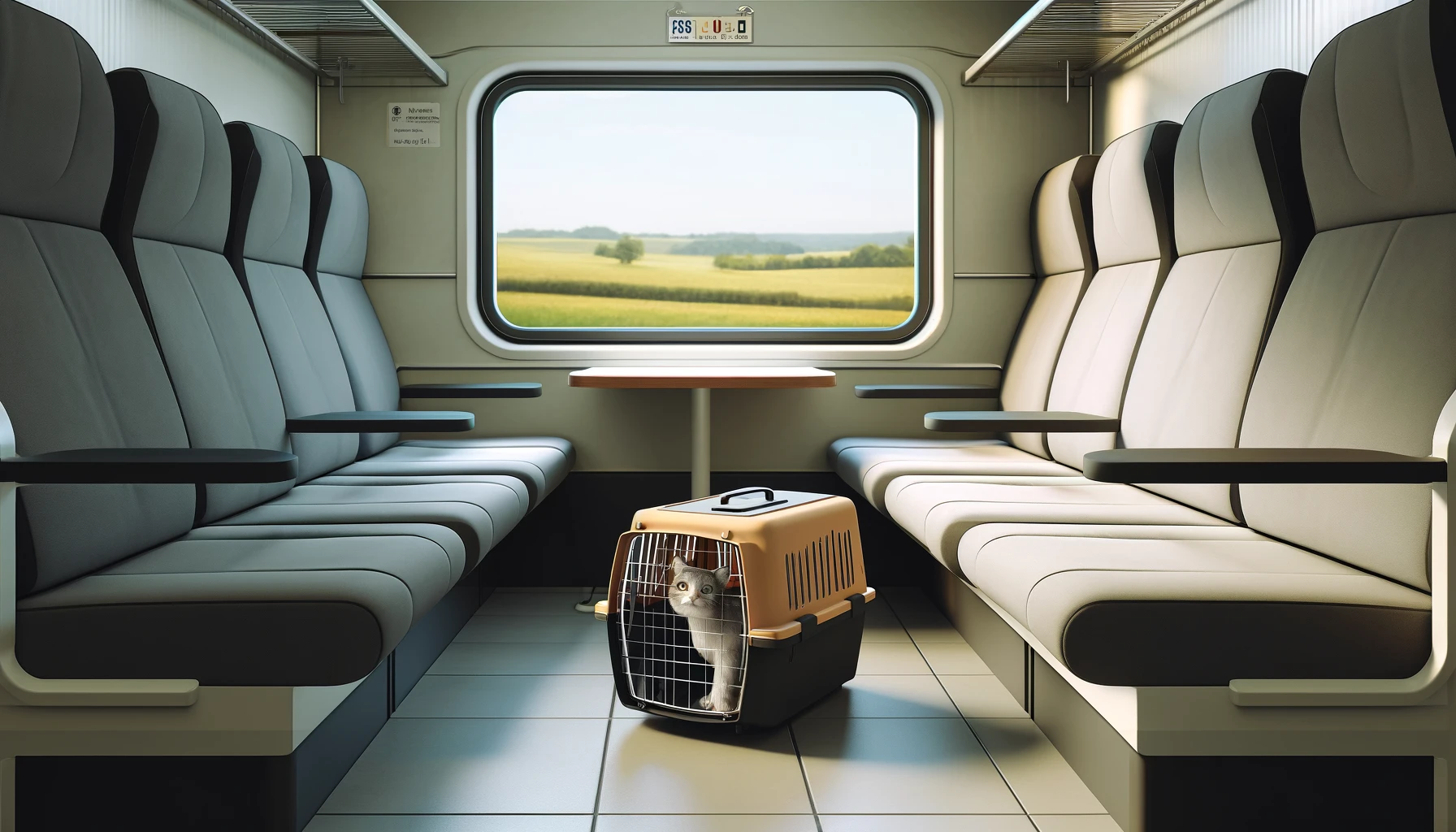
Train Travel Costs
Not all trains allow pets, but for those that do, allowing a cat on board generally costs between $25 and $50, depending on the distance and the train’s pet policy.
Similar to air travel, trains have rules regarding the size and type of carrier your cat must be transported in, so it’s essential to confirm these requirements in advance.
Traveling by train, when possible, can be a more budget-friendly option depending on your route, making it a viable alternative for managing the cost of travel.
- Car travel: Flexible but with added costs for accessories and stops.
- Airline travel: Very expensive, with fees ranging from $75 to $200 or more, depending on the airline.
- Train travel: Limited availability, but relatively cheaper, at about $25 to $50.
Taking all factors into consideration, the total cost of travel will depend on your mode of transport and how well-prepared you are for the journey.
The more research and planning you do in advance, the easier it is to keep travel costs down and ensure a comfortable trip for both you and your cat.
Each mode of transport comes with its own set of costs and rules. Plan accordingly to avoid unexpected expenses during your trip.

Accommodation Costs: Pet-Friendly Options
Accommodation costs can add up during your travel with your cat, particularly if you seek pet-friendly options.
Many hotels and vacation rentals have now opened themselves to travelers with pets, but most of these charge extra fees and have certain restrictions.
It’s always prudent to get in touch with these places ahead of your trip to avoid surprises and ensure your cat stays comfortable.

Hotels That Take Cats
Many hotels claim they have pet-friendly rooms, but they often charge extra fees for bringing a cat along.
These costs can range from $20 to $50 per night, depending on the hotel.
Some pricier hotels may also charge a cleaning fee, which can significantly increase your overall cost of travel.
However, some hotels now offer packages that include pet amenities such as food bowls, litter boxes, and even pet beds, so your feline friend feels right at home.
It always pays to call ahead to confirm their pet policy.
Some hotels have size or breed restrictions for pets, while others limit the number of animals per room.
Be sure to budget for these extra fees, as they can add up quickly, especially with the growing number of travelers bringing pets.

Pet-Friendly Vacation Rentals
Another great option for traveling with a cat is vacation rentals through services like Airbnb or Vrbo.
These rentals often provide more space and flexibility than hotel rooms, making them ideal for longer stays.
However, like hotels, many vacation rentals charge pet fees, which can range from $50 to $150 for the entire stay.
One of the advantages of vacation rentals is that they offer a more home-like atmosphere, which may be less stressful for your cat.
When booking a rental, always read the fine print about pet policies.
Some rentals require an additional deposit, which is refundable after your stay, as long as there is no damage.
Others may have rules about where pets are allowed in the home, or you may need to bring your own supplies for your cat, such as litter boxes and scratching posts.

Extra Fees for Cats in Hotels and Rentals
Both hotels and vacation rentals often have additional fees when you bring a pet along.
These fees can include cleaning charges, damage deposits, or extra charges for pet amenities.
Cleaning fees can range from $25 to $100, and refundable damage deposits may be $100 or more.
It’s important to inquire about these costs in advance so you can plan for the full cost of travel with your cat.
- Hotel fees: $20 to $50 per night, plus possible cleaning fees.
- Vacation rental fees: $50 to $150 for the entire stay, plus deposits.
- Extra fees: Cleaning fees from $25 to $100; refundable deposits $100+.
In conclusion, depending on where you stay, your accommodation costs could be very inexpensive or quite costly.
By researching pet-friendly options in advance and budgeting for extra fees, you can ensure that your vacation with your cat is both comfortable and affordable.
Research pet-friendly accommodations in advance to ensure a comfortable stay for both you and your cat, without breaking the bank.

Extra Costs on the Road: What to Think About
Besides the major expenses of transportation and accommodations, there are several other costs to consider while traveling with your cat.
These additional expenses can vary depending on how long your trip is, where you’re going, and what your cat needs.
Factoring these into the overall cost of travel will ensure that both you and your cat are well-prepared for any eventualities.
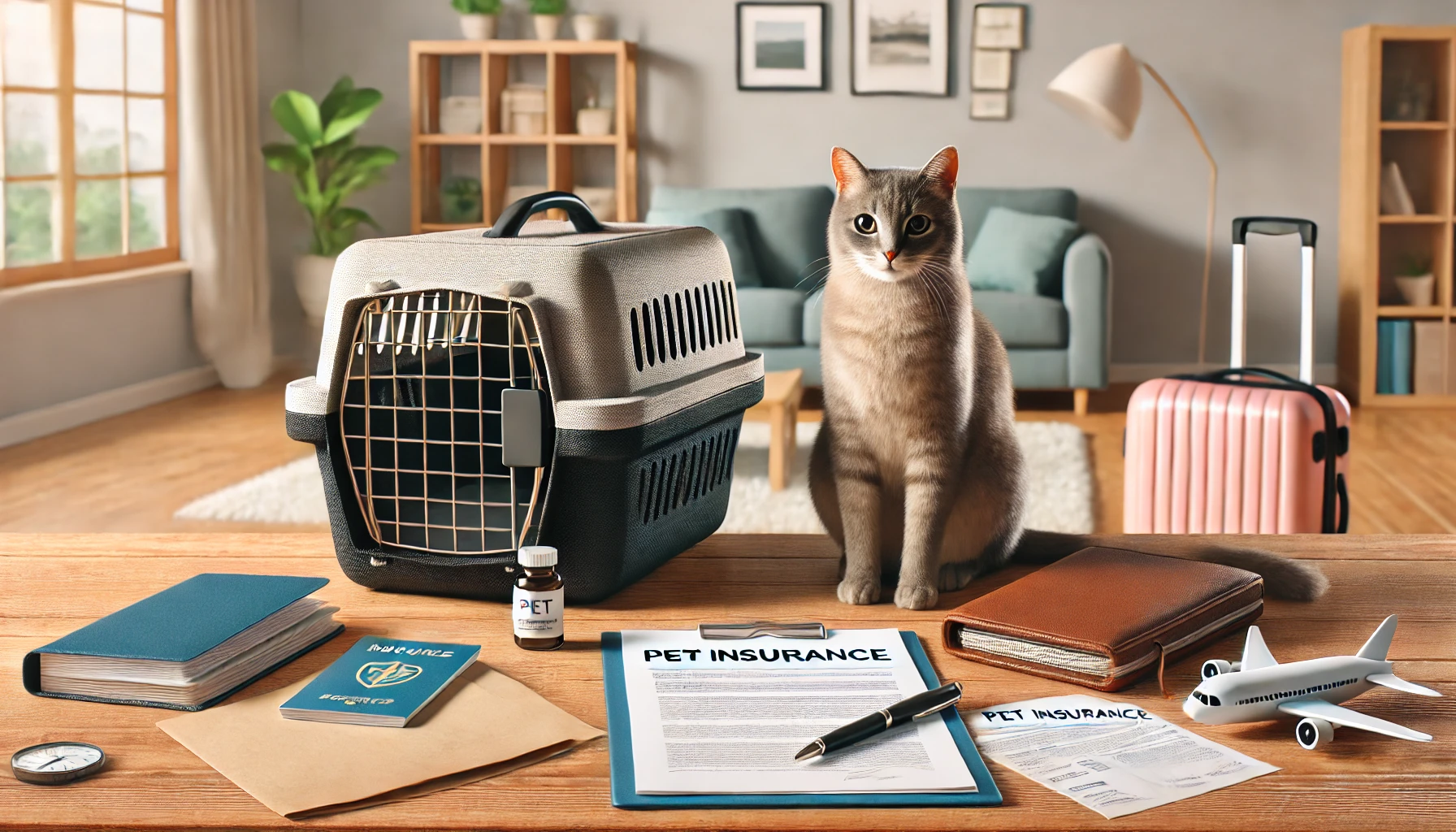
Insurance for Traveling Pets
While optional, purchasing pet travel insurance is a great investment, especially for international travel.
This type of insurance can cover unexpected veterinary bills, lost pet recovery costs, and even trip cancellations related to your pet.
The cost of pet travel insurance typically ranges from $50 to $150, depending on the length and type of coverage.
If you’re concerned about your cat’s health or travel complications, it’s definitely something to consider as part of the total cost of travel.

Costs of Emergency Veterinary Care
Traveling to a new place can sometimes be stressful for your cat, which may lead to sudden health issues.
Emergency veterinary care can be very costly, especially if you are far from home.
It’s wise to have a plan in place, including researching veterinary clinics near your destination.
Emergency vet visits can range from $100 to $500, depending on the severity of the issue and the clinic’s location.
This is yet another reason to consider investing in pet insurance for your trip.

Pet Sitting and Boarding Fees
If you can’t bring your cat along to certain activities during the trip—like sightseeing or dining at a restaurant that doesn’t allow pets—you may need to hire a pet sitter or use a boarding service.
Prices for pet sitting can range from $15 to $40 per hour, depending on your location and the service provider.
Boarding fees can range from $25 to $75 per night, depending on the facility and the level of care offered.
Budgeting for these services is crucial if you want to enjoy parts of your trip without worrying about your cat’s wellbeing.

Entertainment and Comfort Items for Cats
It’s essential to keep your cat entertained and comfortable, especially on long-distance travel.
Bringing along some of your cat’s favorite toys, scratching posts, or familiar blankets can help minimize anxiety from unfamiliar environments.
These items don’t have to be expensive—travel-sized versions or portable options may cost between $10 and $50.
Ensuring your cat is entertained and comfortable will contribute to a better trip for both of you.
- Pet travel insurance: $50 to $150, depending on coverage.
- Emergency veterinary care: $100 to $500 per visit.
- Pet sitting/boarding fees: $15 to $75 per hour/night.
- Entertainment and comfort items: $10 to $50 for travel-sized items.
By factoring these additional costs into your travel budget, you can ensure a less stressful trip for both you and your cat.
While these expenses may seem small, they can quickly add up, so it’s always wise to plan ahead and avoid unnecessary financial strain.
Prepare for emergency situations and other unexpected costs by budgeting for pet insurance, veterinary care, and more.
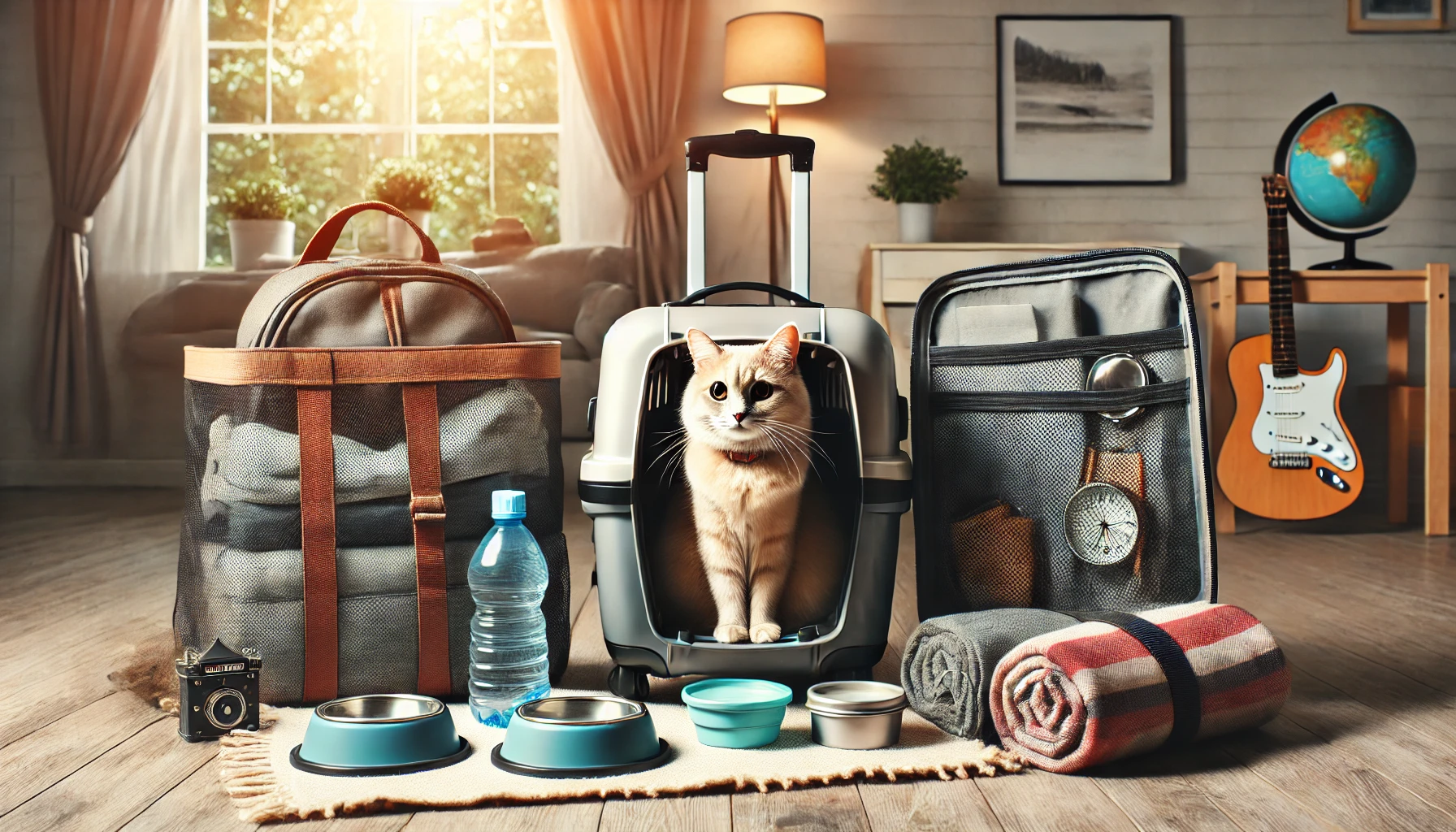
Saving Money on the Cost of Travel with Cats: Practical Tips
Traveling with your cat doesn’t have to be as expensive as it may seem.
There are plenty of ways to save money while still keeping your cat safe and comfortable during the journey.
By strategically planning and cutting out unnecessary expenses, you can ensure that the overall cost of travel remains low without sacrificing your pet’s needs.
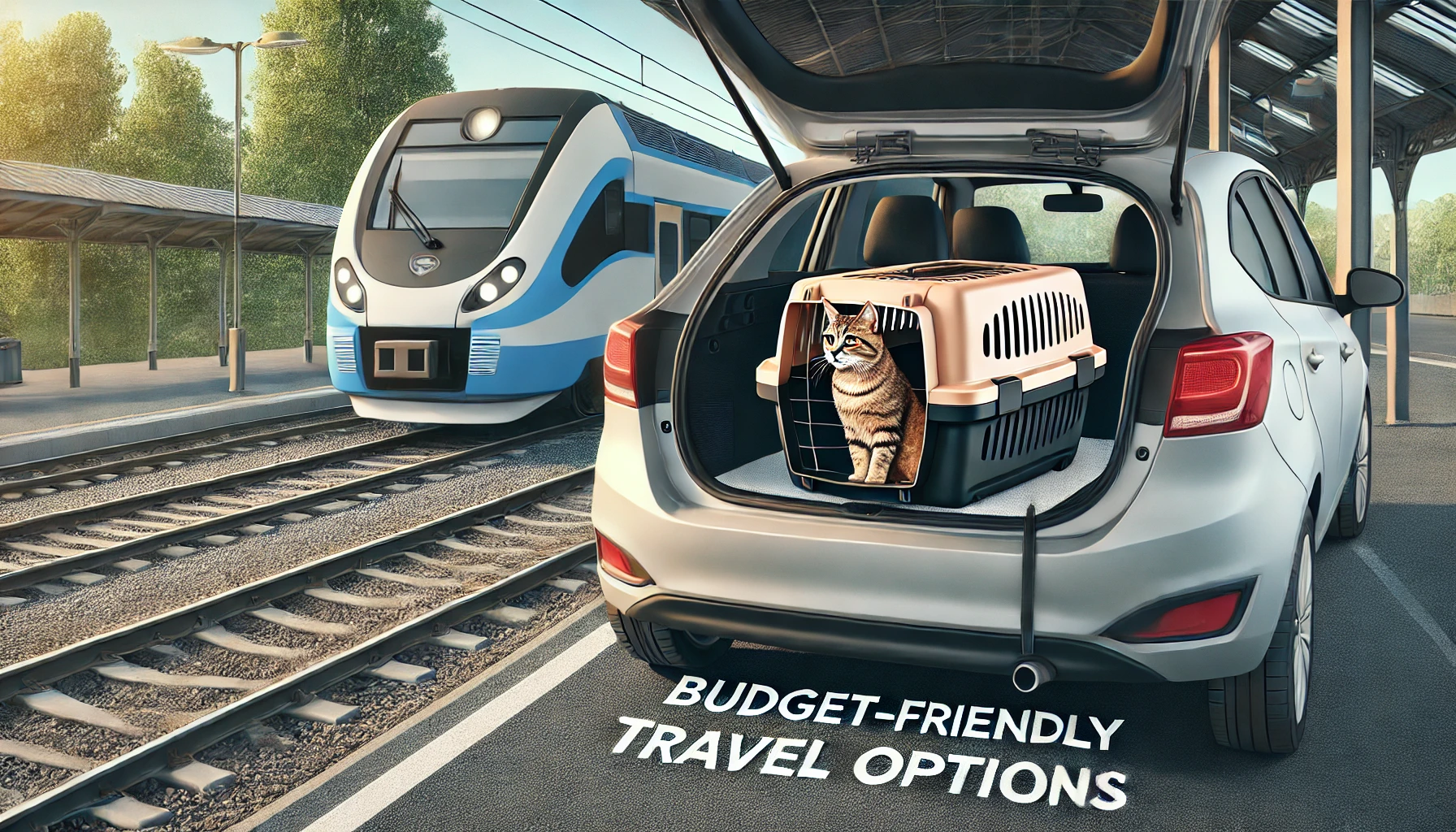
Budget-Friendly Travel Options
One of the best ways to cut down on your travel expenses with your cat is by choosing budget-friendly travel options.
For example, opting for car travel over flying can be much more affordable.
While flights might be faster, the airline fees for carrying your pet can add up quickly.
Train travel is also usually cheaper than flying and may offer more comfort for your cat.
If flying is necessary, booking early or using rewards points to cover the cost of your pet’s ticket can help you save on the cost of travel.
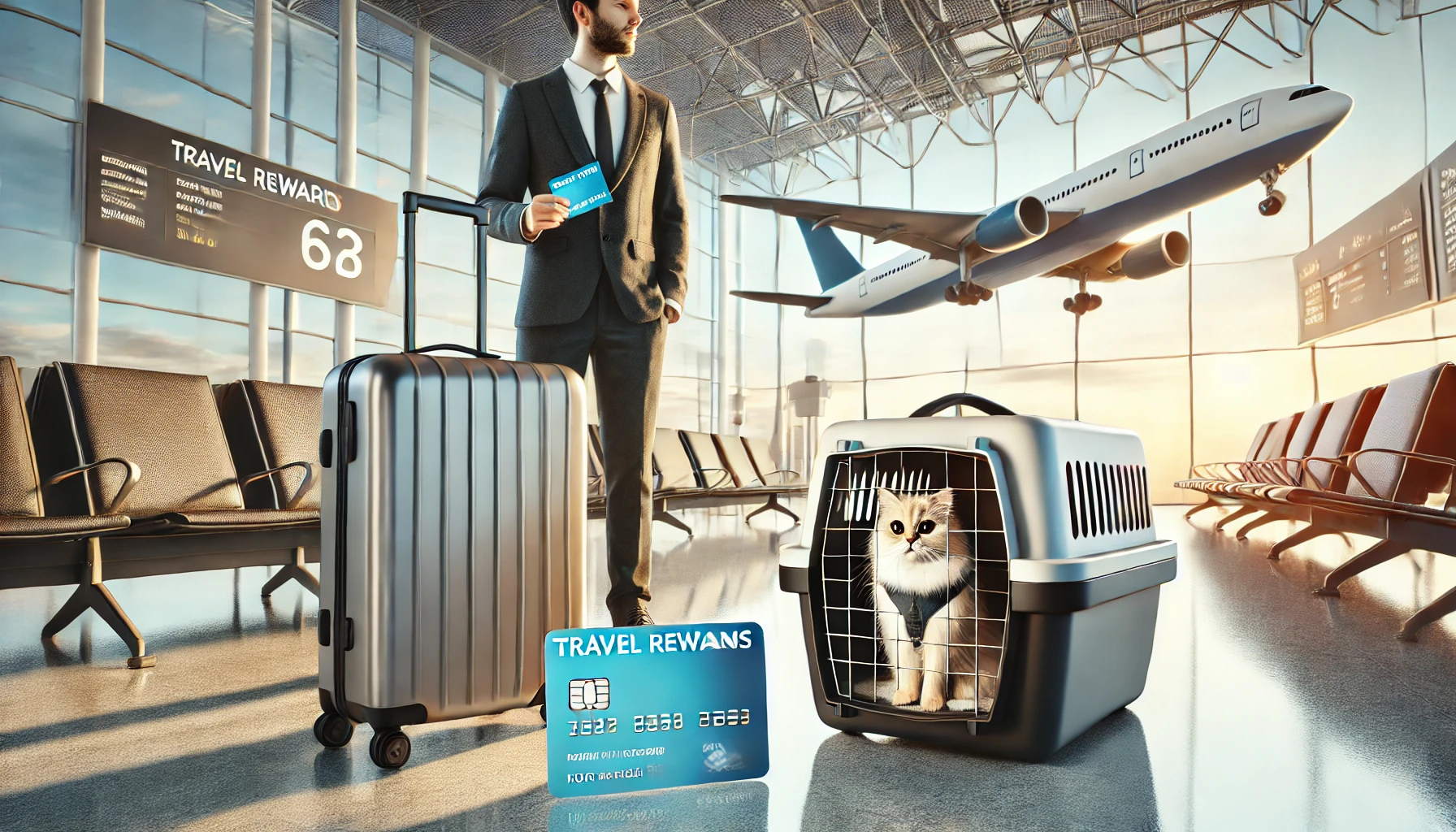
Using Loyalty Programs to Defray Pet Travel Costs
If you frequently travel with your cat, loyalty programs through airlines, hotels, or car rental companies can help defray the cost of travel.
Many loyalty programs offer perks or discounts for pet travelers, such as free or discounted pet fees, or free pet accommodations after several trips.
Some hotels also partner with pet-related brands and offer reduced rates on pet-friendly rooms or services.
Be sure to check for available discounts through loyalty programs before booking your trip.
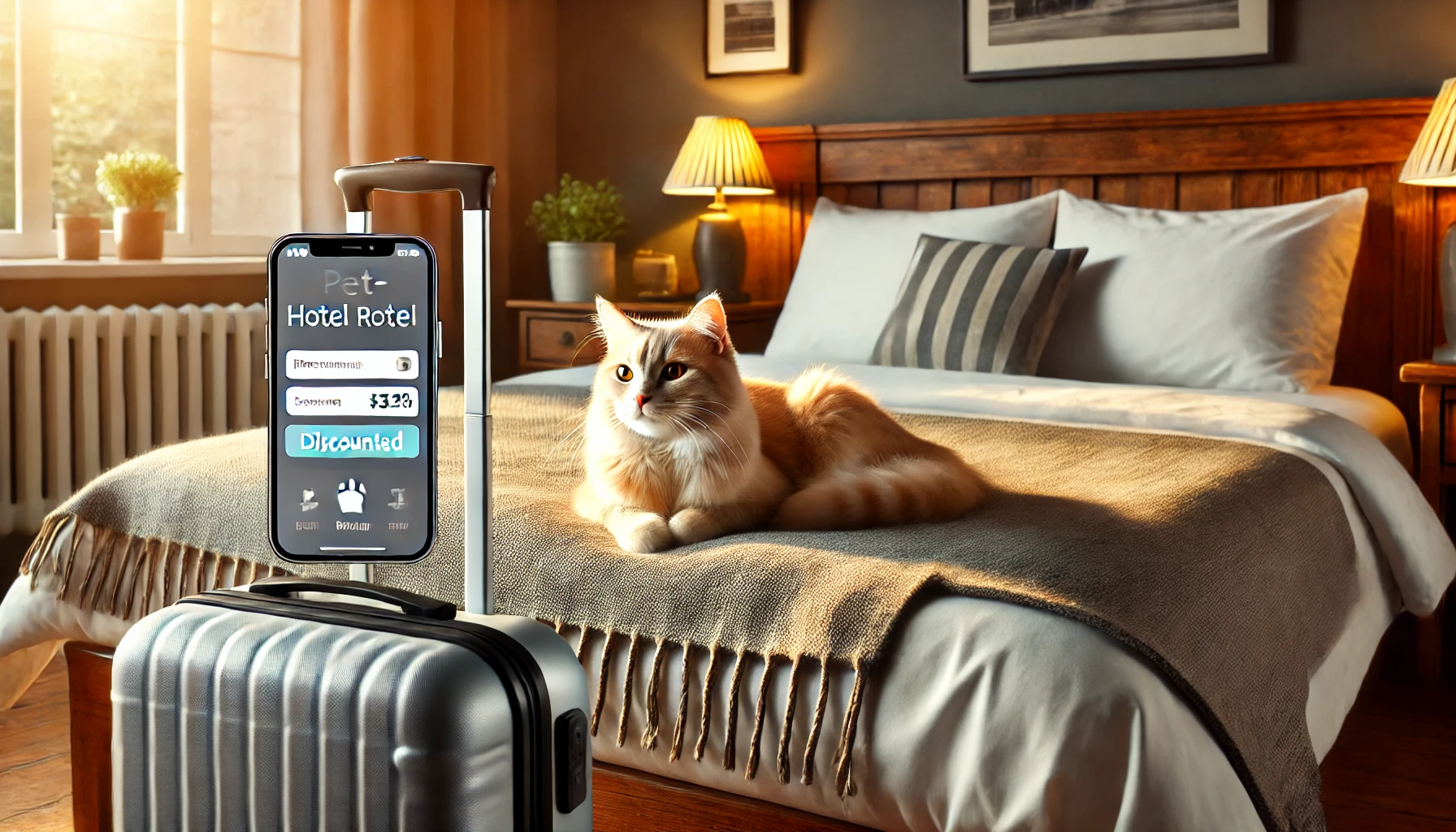
Finding Discounts for Pet-Friendly Accommodations
Hotels and accommodations sometimes charge extra fees when you bring your pet along.
Save money by finding hotels or vacation rentals that don’t charge additional fees for pets or that include pet amenities in their standard room rate.
Some booking websites allow you to filter for pet-friendly options and may offer discounts for certain areas or during off-peak times.
Additionally, contacting the accommodation directly to inquire about any available discounts or promotions can save you even more on the cost of travel.
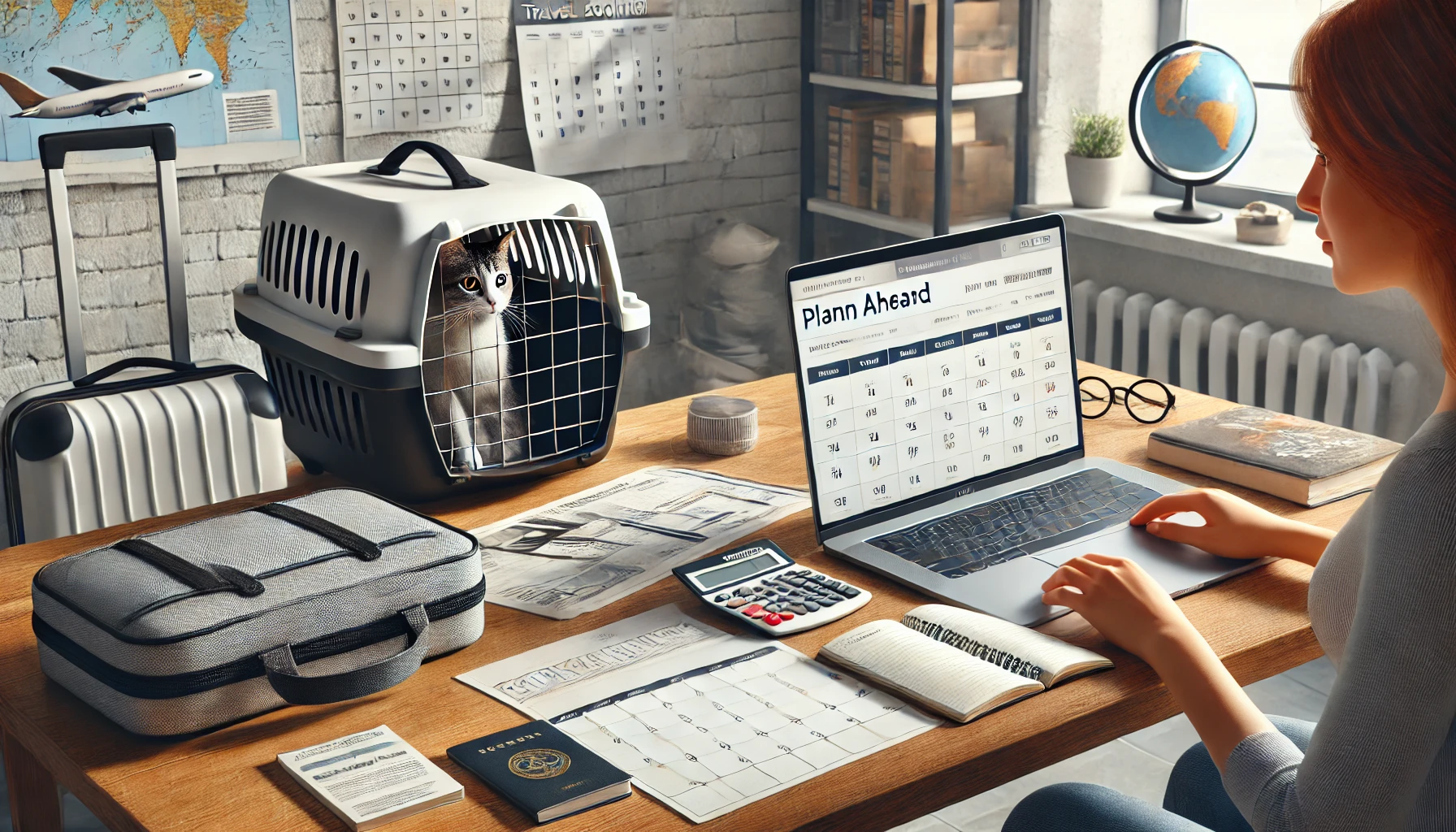
How to Plan Ahead for Savings
Proper planning is key to saving on the cost of travel with your cat.
Booking transportation and accommodations in advance often results in lower rates and discounts.
Additionally, packing all the necessary supplies for your cat—such as food, water, toys, and litter—will help you avoid expensive, last-minute purchases.
Look for free or low-cost activities at your destination that are pet-friendly to save money on entertainment during your trip.
- Budget travel: Whenever possible, use car or train travel instead of flying.
- Loyalty programs: Take advantage of discounts or benefits for pet travelers.
- Finding accommodation discounts: Search for deals on pet-friendly hotels or vacation rentals.
- Planning ahead: Make reservations in advance and bring everything your cat will need to avoid last-minute expenses.
If you want to reduce the overall cost of travel and enjoy your journey without constantly worrying about budgeting, these practical tips can help.
With a little research and preparation, you can ensure both your comfort and your cat’s safety without sacrificing anything along the way.
Plan ahead to save money on travel with your cat by using loyalty programs, booking early, and packing essentials.

Final Thoughts on the Cost of Traveling with Cats
First and foremost, it is important to consider the various costs involved in traveling with a cat to ensure that the journey is hassle-free.
The overall cost of travel with your feline companion can add up, starting with transportation and accommodations, and extending to pet insurance and emergency care.
However, with the right preparation and careful planning, these costs can be kept within reasonable limits while ensuring your cat’s comfort and safety.
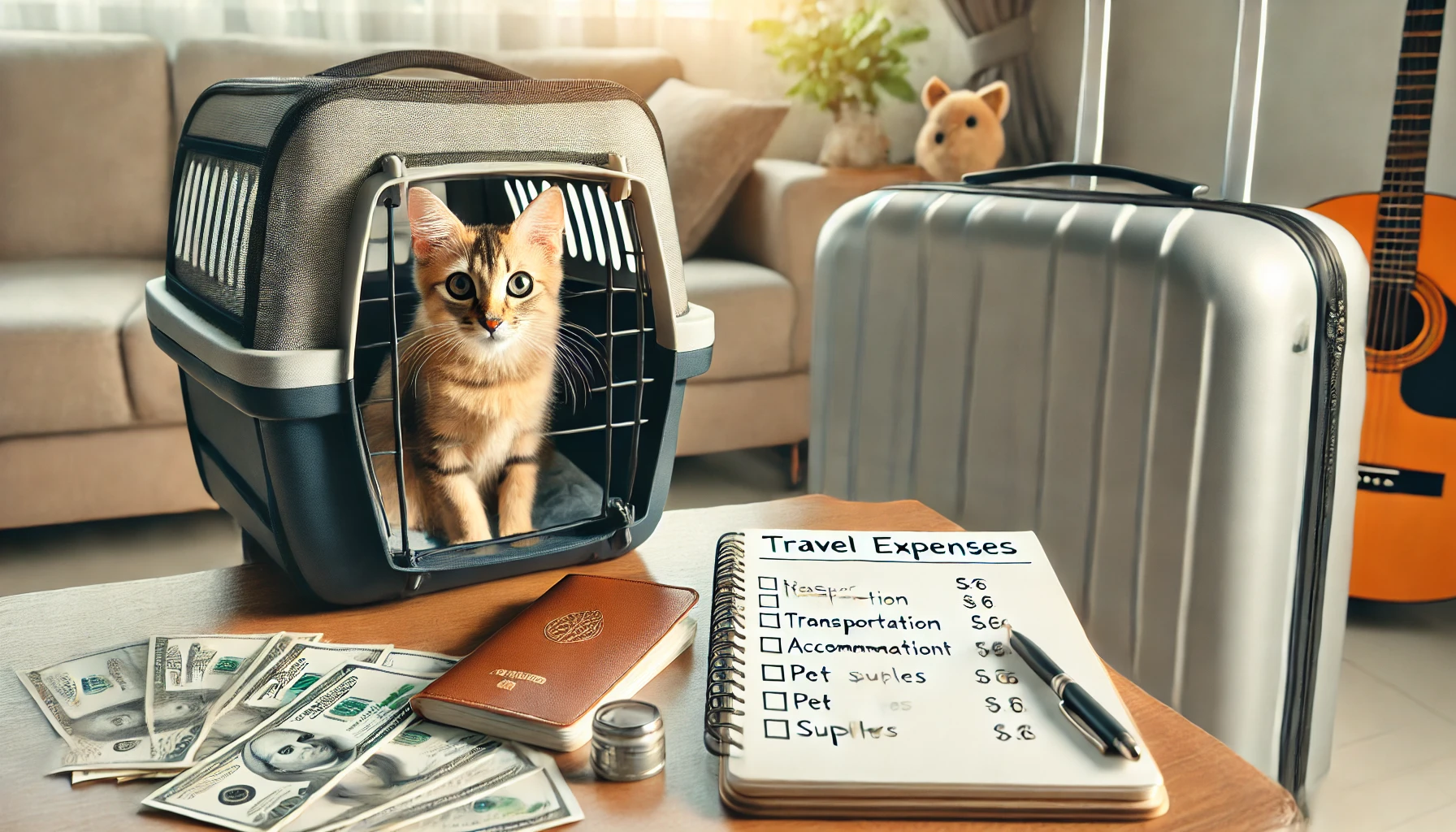
Knowing Your Major Travel Expenses
When traveling with a cat, the major travel expenses include transportation costs, accommodation costs, and other miscellaneous fees.
Whether you decide to drive, fly, or take a train, you will need to consider the specific travel costs associated with each mode of transport.
Similarly, finding pet-friendly accommodations often comes with extra fees, so it’s essential to research and budget accordingly.
- Transportation: Car or train travel is generally cheaper and more comfortable for your cat compared to flying.
- Accommodations: Choose hotels or vacation rentals that allow pets without hefty charges or offer concessions for pet allowances.
- Miscellaneous costs: Be prepared for cat travel insurance, emergency veterinary care, and other unexpected expenses.
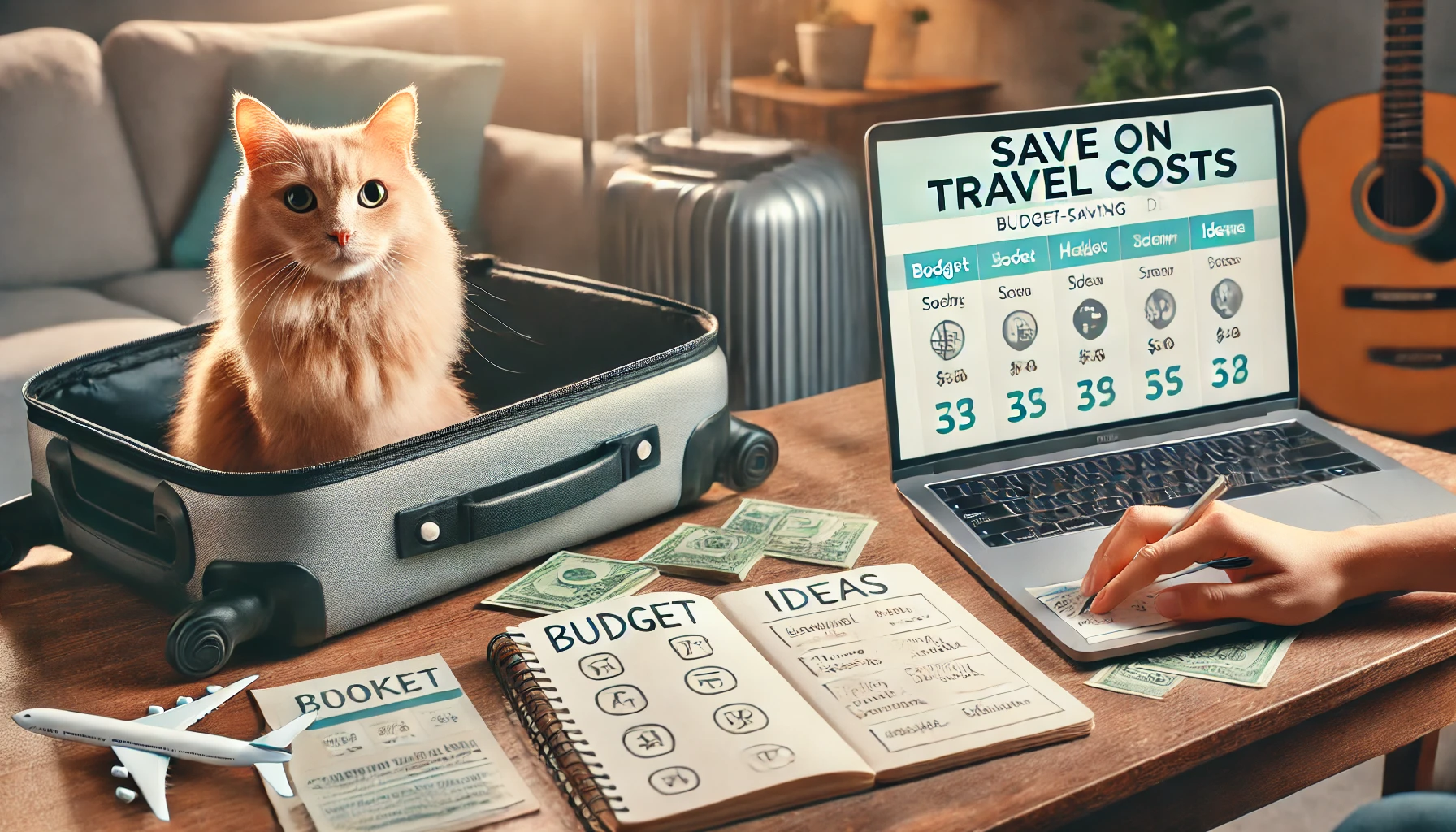
Ways to Save on the Cost of Travel with Your Cat
With a little strategy, you can save money on the cost of travel with your cat.
Opt for cheaper methods of transportation, take advantage of loyalty programs for discounts, and make reservations early to secure the best price.
Packing your cat’s essentials—such as food, water, and toys—will also help you avoid unnecessary purchases at your destination.
- Budget travel: Car and train travel are usually cheaper compared to flying.
- Loyalty programs: Take advantage of discounts offered by airlines, hotels, or car rental agencies.
- Planning ahead: Make early bookings and bring everything your cat will need to avoid unplanned expenses.
Keeping Your Cat Comfortable on a Trip
Beyond budgeting for the cost of travel, it’s important to ensure your cat has a comfortable and enjoyable journey.
Secure your cat safely in a carrier, bring along favorite toys, and include frequent stops to reduce unnecessary stress.
Be sure to research pet-friendly activities at your destination to further enhance your trip.
Knowing the potential cost of travel in advance can make for a memorable and stress-free vacation with your feline friend.
If you budget properly, do thorough research, and meet your cat’s needs, traveling with your pet doesn’t have to be expensive or overwhelming.
Careful planning can help you manage the cost of travel while ensuring your cat’s comfort and safety on the road.
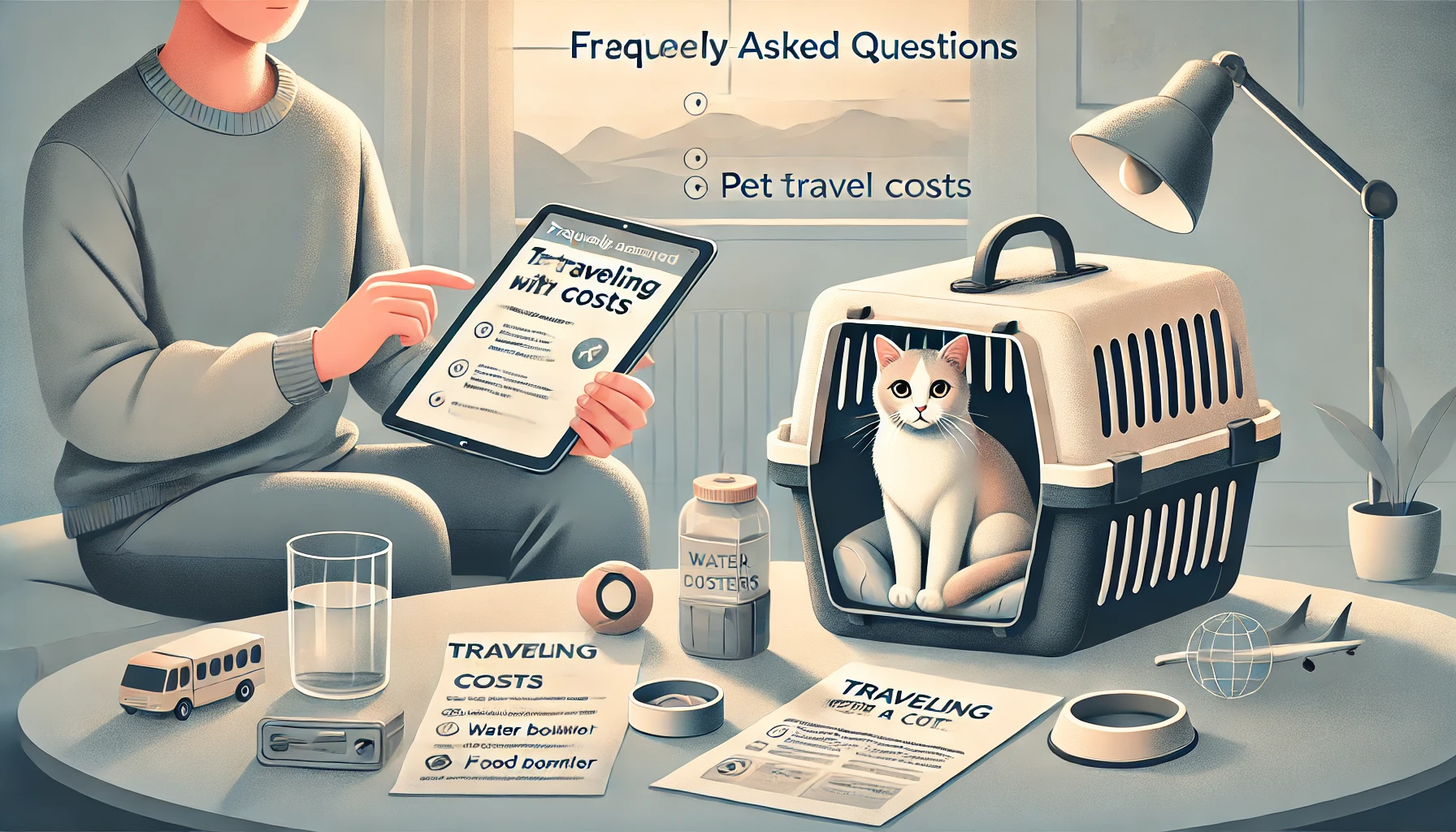
Questions People Frequently Ask About the Cost of Traveling with Cats
Following are some of the most frequently asked questions about the cost of travel involved in traveling with cats, along with answers to help you plan your journey effectively.
How much does flying with a cat cost?
Most airlines charge anywhere between $75 to $200 to fly with a cat.
Some airlines may have additional fees for pets flying in-cabin or as cargo, and they often specify the type of carrier required.
What are some cheap travel options for cats?
Traveling by car or train is typically the most economical way to travel with your cat.
These modes are generally less expensive than flying and offer more flexibility when managing your cat’s needs during the trip.
Do all hotels charge extra for pets?
Not all hotels charge extra for pets, but many do.
The fees usually range from $20 to $50 per night.
Some hotels offer special pet packages that include items like beds, bowls, and litter boxes for your cat’s comfort.
Is pet travel insurance worth the cost?
Pet travel insurance is particularly valuable for international trips.
It often covers emergency veterinary bills, trip cancellations, and lost pet recovery, helping you avoid unexpected expenses while ensuring your pet’s safety.
What should I bring for my cat during travel?
Essential items for traveling with your cat include a secure carrier, food, water, toys, litter, and a blanket.
Packing these items ensures your cat’s comfort and helps you avoid unnecessary purchases during the trip.
How can I save money while traveling with my cat?
You can save money by opting for budget-friendly travel methods, using loyalty programs for discounts, and booking accommodations early.
Additionally, packing your cat’s essentials will prevent last-minute purchases at your destination.
What are some unforeseen costs of traveling with a cat?
Unforeseen costs may include emergency veterinary care, pet sitting or boarding fees, and additional cleaning fees at hotels or rentals.
It’s important to budget for these contingencies as part of your overall cost of travel.

